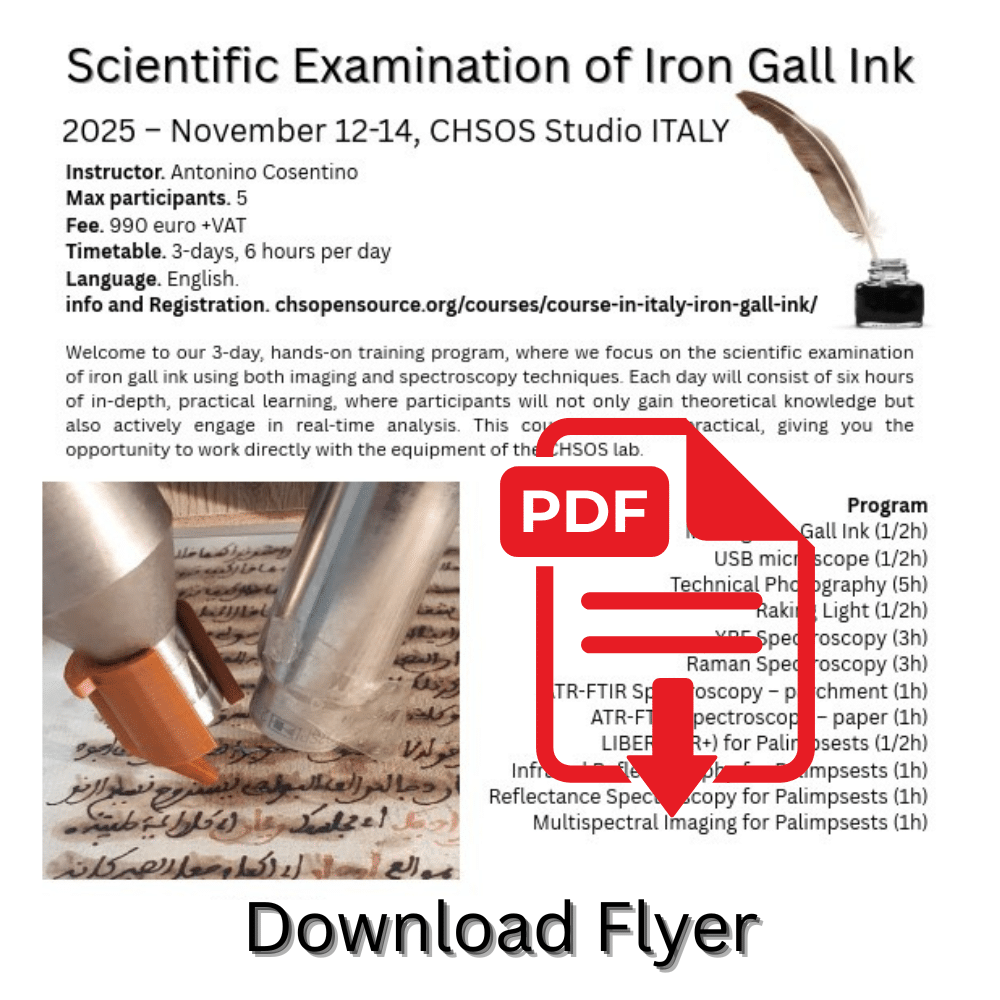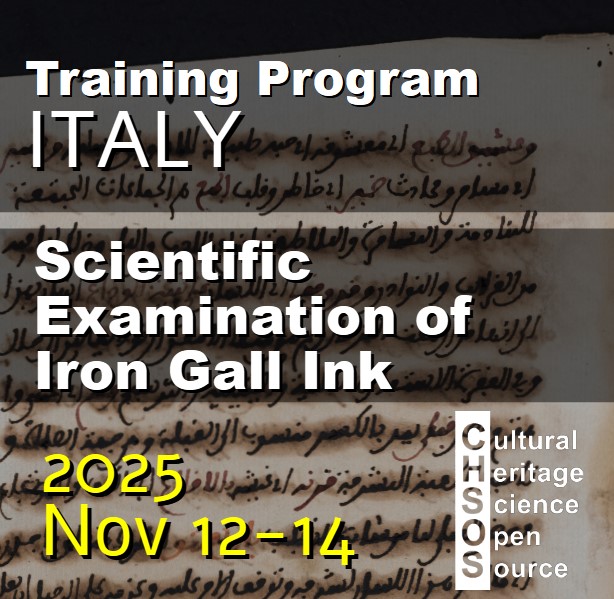Just published on our website the Reflectance Spectra Database for the new Pigments Checker “Modern & Contemporary Art”.
The spectra were acquired with the GorgiasUV spectrometer that covers the extended part of the UV spectrum. This paper discusses these spectra and highlights the most important findings.
Used from the late 80′ [1] Reflectance Spectroscopy (RS) is a powerful tool for the identification of pigments and dyes [2]. A reflectance spectrum shows for each wavelength the ratio between the intensity of the reflected and incident radiation. This ratio is called reflectance and is given in percentage (%). Pigments are identified using a spectral database and comparing the spectral features of the investigated unknown spectrum with the spectra available in the database.
The advantages of this method with respect to the other spectroscopic methods are: affordable equipment, small dimension, and portability.
Pigments Checker “Modern & Contemporary Art”
This is a collection of the most important pigments used in modern & contemporary art. On the other hand, the STANDARD Pigments Checker is a collection of the most used pigments from prehistory to contemporary art, and consequently, it has just a few modern pigments. This new checker is focused solely on modern pigments and completes those already included in the standard Pigments Checker. The colors are laid with an acrylic binder on a cardboard support. We collected the spectra of the pigments and that of the binder alone on the cardboard. All these spectra are available online on the Pigments Checker webpage.

Gorgias versus GorgiasUV
From 2021 the Reflectance Spectrometer GorgiasUV is part of our tools for scientific art and archaeology examination.
It is based on the standard Gorgias system but it is optimized to cover a wider range into the UV, up until 200 nm.
GorgiasUV explores with much more reliability the extreme part of the UV spectrum, providing helpful information for pigments identification.
Along with the usual halogen lamp, GorgiasUV features a Deuterium lamp and a dedicated solarization-resistant fiber probe to effectively work within the UV range, figure [1].
We discussed the advantages of GorgiasUV over the standard Gorgias by testing the 2 instruments on the standard Pigments Checker [3].
Our conclusions stated that GorgiasUV provides better results in the UV range thanks to its Deuterium lamp, but because of this special lamp, the system is a bit bulkier. Also, it is more costly since it uses special fiber optics that must resist the UV radiation from the Deuterium lamp. We suggested that the standard Gorgias is recommended for most applications and in particular for those that require mobility and traveling with the equipment. GorgiasUV, which definitely, provides better results in the UV region must be considered as a complementary tool to the standard Gorgias, in order to achieve, when it is possible, more features-rich spectra. Figure [2] illustrates the PROs and CONs of the 2 reflectance spectroscopy systems.

Most pigments show the same spectra
For most pigments, there is no difference in using GorgiasUV or the standard Gorgias. This is because often the spectral information is in the visible and infrared regions. This is the case for PW 6 – anatase. Figure [3] displays the spectra of this pigment acquired with Gorgias and GorgiasUV. The pigments feature a strong absorption band in the UV region with the inflection point at 378 nm. These features can be observed with both the 2 reflectance systems. GorgiasUV just provides more insight into the far UV, but in this case, there are no characterizing features. The same can be said for PB 33 – manganese blue, figure [4]. Other examples are PB 66 – synthetic indigo.


Extra features in the UV region
Some pigments showcase characterizing features in the UV region when tested with the GorgiasUV. Figure [5] illustrates the case of Basic Red 9 – fuchsine. The UV region reveals a maximum at 420 nm and an absorption band at 295 nm. Other examples:
PG 36 – phthalo green YS shows another maximum at 318 nm, figure [6].
PR 90 – eosin Y has 2 strong absorption bands at 345 nm, and 310 nm, figure [7].
PR 259 – ultramarine pink shows an absorption band at 400 nm, figure [8], as well as PV 15 – ultramarine violet.
PV 3 – gentian violet features a complex series of bands in the UV region, figure [9].
PW 11 – antimony white has a characterizing 2-steps absorption band in the UV region, figure [10], as well as PW 21 – barium sulfate, figure [11].







Conclusions
The analysis of the new set of modern pigments confirm that even with these modern paints, reflectance spectroscopy is a valid tool for, at least, a preliminary characterization of the colors.
GorgiasUV provides better results in the UV range thanks to its Deuterium lamp, but because of this special lamp is also a bit bulkier. Furthermore, it is more costly since it uses special fiber optics that must resist the UV radiation from the Deuterium lamp. We suggest the standard Gorgias for most applications and in particular for those that require mobility and travel with the equipment. Since GorgiasUV provides better results in the UV, we consider it a complementary tool to the standard Gorgias.
References
[1] BACCI, M., CAPPELLINI, V., CARLA’, R. (1987). Diffuse reflectance spectroscopy: An application to the analysis of art works, Journal of Photochemistry and Photobiology B: Biology, 1, Issue 1, 132.
[2] FONSECA, B., SCHMIDT PATTERSON, C., GANIO, M., MACLENNAN, D., & TRENTELMAN, K. (2019). Seeing red: towards an improved protocol for the identification of madder- and cochineal-based pigments by fiber optics reflectance spectroscopy (FORS). Heritage Science.
[3] COSENTINO, A (2021) CHSOS application note # 1. Testing GorgiasUV on Pigments Checker.
-
 GorgiasUV5.570,00€
GorgiasUV5.570,00€ -
 Pigments Checker (TP-MSI calibration card included)730,00€
Pigments Checker (TP-MSI calibration card included)730,00€









